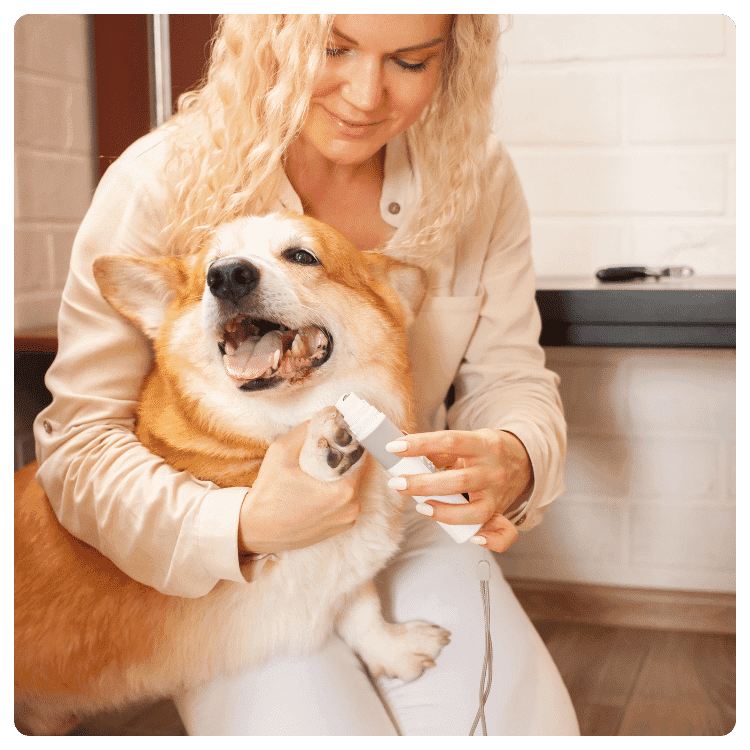
Do you ever catch yourself giving your furry friend the side-eye when they’re up to their usual antics? If you’ve been tempted to Google “how to fix your dog’s bad habits,” you’re not alone – we’ve all been there! But before we dive into the doggy drama, let’s clear one thing up: harsh punishments simply won’t cut it. Dogs are masters at concealing their not-so-ideal behavior, and yelling “bad dog” is about as effective as barking at the moon.
According to one study, nearly 30% of young pups have had to be put down due to undesirable behavior. Sadly the top canine crime is aggression. But there is some good news: bad behavior can be corrected. In this article, we’ll sniff out the top bad dog habits and guide you through fixing them!
8 Bad Habits You Need to Watch Out for Your Dog
Here is a list of 8 common bad habits you must pay attention to in your dog and discourage them:
1. Inappropriate Chewing
Chewing is an instinctive behavior for dogs. Exploring their surroundings is not only enjoyable but also helps to relieve boredom. Chewing also serves the purpose of cleaning your dog’s teeth. It is, however, essential to teach your dog what items are acceptable for chewing.
Dogs may also have seizures due to chewing since they may chew on poisonous household detergent bottles. Please do not punish your dog for inappropriate chewing. Provide your pets with a variety of chew toys to play with. Please encourage them to engage with these toys by offering treats and guiding them towards them. Praise them when they chew on their toys so that they know this is an appropriate behavior.
As a puppy owner, make sure to check your puppy for teething. A dog’s gums can be inflamed while teething and cause them to chew inappropriately. Whenever possible, purchase toys that are specifically designed for puppies who are teething.
2. Digging Excessively
Digging is a means by which dogs relieve their build-up of energy or locate a scent. Either way, this behavior can aggravate if your dog damages your property. You may see them digging to conceal items such as toys or bones.
You can remove this bad behavior in your dog by taking them for a walk and spending time with them. You may wish to keep a sandbox for digging to break this habit. Tell your dog that only certain areas are suitable for digging, and train them accordingly. If you want to make that area more enjoyable for your pet, add treats and toys.
3. Barking When a Doorbell Rings
There are many reasons why dogs bark at the doorbell. Their bark could be a reaction to visitors, or it could be a watchdog response. When dogs bark, some even believe they’re training you to open the door by barking. An excellent way to prevent dogs from barking at doorbells is to reward them for alternative behaviors, such as lying on a nearby rug while awaiting the door’s opening.
4. Getting Food by Begging
Is your dog always begging you for food when it comes to the table? The habit may initially seem cute, but it may eventually become bad. Any behavior that brings a reward to a dog makes it more likely for them to repeat it. They will probably beg for food from the table again if you give it to them once.
Whenever your dog eats at the dining table, you should avoid feeding him anything. Keep everyone in the family from providing them as well. He will stop begging for food once he understands it won’t accomplish anything. Dogs can also be trained to go to bed at dinnertime. A second option would be to have his meal time coincide with yours so you can enjoy your meals peacefully.

5. Pulling on The Leash
Dogs acquire all of the habits discussed above due to their past experiences with rewards. Leash pulling is no exception. A dog considers pulling your leash a reward if you move in the direction they direct you.
Simply put, if you wish to stop your dog from pulling on the leash, you should prevent them from moving forward until you want them to. Stop your dog from pulling on the leash, and be firm with him. It is not a good idea to allow your dog to advance.
You should walk in the opposite direction if your pet isn’t relaxing. This exercise may sound simple, but it requires much patience and practice. If you own a Greyhound, we recommend purchasing a Greyhound harness instead of a regular dog collar because it gives you a better hold on your dog and allows you to control it.
6. Urinating in The House
This one is the most disgusting. Peeing on things is common among dogs to mark territory or communicate with canine friends. Take your dog outside immediately if you catch him urinating inside the house (or even preparing to do it). When he chooses to urinate outdoors, reward him and praise him. Use an enzymatic cleaner to remove the scent of previously urinated markings to prevent frequent urination.
7. Anxiety Associated with Separation
Separation anxiety is the primary destructive behavior that disturbs a dog’s owner’s peace. Anxiety symptoms commonly seen in dogs are howling, barking, urinating, and defecating. The dogs may display other destructive behaviors when the owners are not present. As a result of separation anxiety, the following symptoms occur:
- When your dog sees you preparing to depart, he becomes anxious
- Misbehaving 15 to 45 minutes after the owner leaves the house
- Your dog will constantly follow you around
To treat separation anxiety, training is required, as well as modifying behavior and desensitization techniques. Some veterinarians may even prescribe medications. You should leave your dog for five minutes during the desensitization process. After they have become accustomed to being alone, you can gradually increase the duration.
8. Getting Up and Jumping
It is common for dogs to jump up, especially when they are around their owners. Although it may appear cute at first, others may find it irritating. A dog must not jump on strangers or anyone they see in public.
A puppy jumps up to greet its mother on two feet. Because they consider you a parent, they do the same thing to you. When your puppy is excited, he may display this behavior. You can use numerous methods to prevent your dog from jumping, but they will only sometimes work.
A reward may be offered for jumping up, as it is an attention-seeking behavior. You can avoid this undesirable behavior by walking away from your dog or turning your body away and ignoring him. Ignoring your dog is not the behavior they seek, and therefore they will learn that is not what they should do to garner your attention. It is important to reward your dog when he understands and relaxes or remains on all 4 feet the next time he sees you.
Remember…
Dogs may be creatures of habit, but that doesn’t mean their bad behaviors are set in stone! Just like us, they’re quick to jump on anything that brings joy or excitement. That’s where you come in with a bit of guidance, patience, and love, to steer them towards a more positive path.
We’ve unraveled the mystery behind 8 common doggy habits and shared some valuable insights on how to curb them. So, if you ever spot your furry friend indulging in one of these mischievous routines, don’t fret! You’ve got the know-how to tackle the issue head-on.
Remember, this is a journey, not a sprint. With consistency and kindness, you can help your pup become the well-behaved companion you’ve always dreamed of. So, let’s embrace the adventure of dog ownership with open arms, and together, we’ll wag our way to a harmonious relationship between humans and their four-legged pals!
This guest post was contributed by Arslan Hassan.






